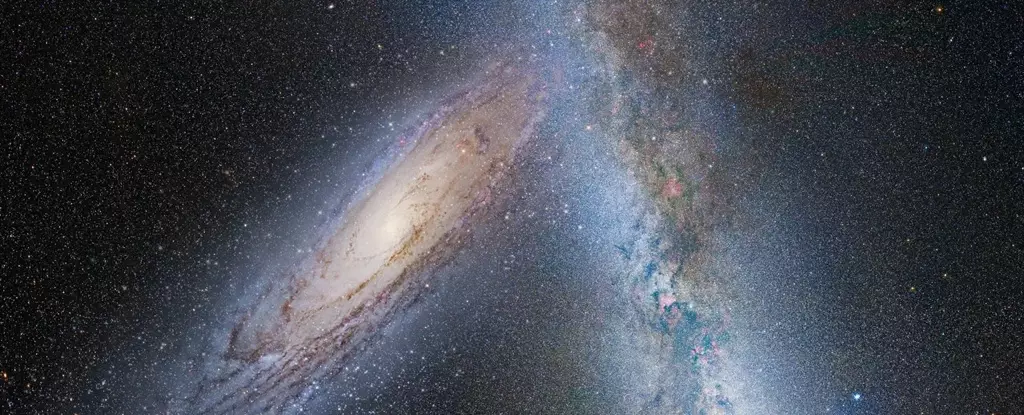As the closest major galaxy to our Milky Way, Andromeda has been on a collision course with our galaxy for billions of years. However, recent studies have shown that the fate of these two galaxies might not be as set in stone as previously believed. Astronomers from the University of Helsinki and Durham University have conducted a deeper analysis of the galactic neighborhood, using data from the Gaia and Hubble space telescopes to simulate the movements of not only the Milky Way and Andromeda, but also the Large Magellanic Cloud (LMC) and the Triangulum Galaxy.
Previous studies have indicated that a collision between the Milky Way and Andromeda was almost inevitable. However, the latest research suggests that the odds of a collision happening within the next 10 billion years are closer to 50/50. When considering the interactions between all four galaxies in one simulation, the chances of a Milky Way-Andromeda merger were just slightly over 50 percent. Adding the Triangulum Galaxy to the mix increased the probability to two-thirds, while including the LMC decreased the chances to one-third.
Even if a collision does occur, it seems that we have more time than previously thought. The study found a median merger time of over 7.6 billion years in the future, significantly longer than the previous estimate of 4 to 5 billion years. This extended timeline suggests that any potential merger is far in the future, long after the expected lifespan of the Sun. The likelihood of life on Earth experiencing the effects of a galactic collision is slim, as the cosmic event would take place over such an immense period of time.
While the idea of galaxies crashing into each other may sound catastrophic, the reality is that the impact of such a collision would be minimal on a cosmic scale. Galaxies are vast and mostly empty, so the likelihood of stars actually colliding during a merger is incredibly low. Instead, the gravitational interactions between stars would lead to new orbits and the formation of new stars. In the case of a Milky Way-Andromeda merger, the two galaxies would lose their spiral shapes and combine to form one giant elliptical galaxy, which astronomers have dubbed “Milkomeda.”
Despite the new insights provided by this study, the future evolution of the Milky Way, Andromeda, and the rest of the Local Group remains uncertain. While some scenarios point towards an eventual merger between the two galaxies, there is an equal probability of them continuing to evolve independently for eons to come. More research, including upcoming data releases from the Gaia telescope, could shed further light on the fate of these galactic giants. As it stands, the notion of the Milky Way’s imminent demise appears to be greatly exaggerated, leaving room for continued exploration and discovery in the vastness of the cosmos.


Leave a Reply